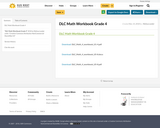
DLC Math Workbook Grade 4
- Subject:
- Math
- Material Type:
- Activity/Lab
- Homework/Assignment
- Provider:
- Sun West Distance Learning Centre (DLC)
- Date Added:
- 11/15/2018

DLC Math Workbook Grade 4

The following resource contains the assets (or resources) to accompany the Sask DLC Financial Literacy 20 course - Unit 1. Please note that this is not the content of the course, but the assets used to support and deliver it.
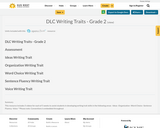
This resource includes 5 videos for each of 5 weeks to assist students in developing writing trait skills in the following areas:
-Ideas
-Organization
-Word Choice
-Sentence Fluency
-Voice
**Please note: Conventions is embedded throughout
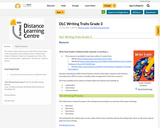
The resource offers video lessons on the three of the writing traits at the grade 3 level, using the resource "Write Traits Student Traitbook" Grade 3, by V. Spandel and J. Hicks.
The traits covered include:
- organization
- word choice
- sentence fluency
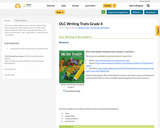
The resource offers video lessons on the four of the writing traits at the grade 4 level, using the resource "Write Traits Student Traitbook" Grade 4, by V. Spandel and J. Hicks. The traits covered include: - ideas - organization - sentence fluency - word choice
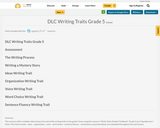
The resource offers multiple video lessons for each of the writing traits at the grade 5 level, using the resource "Write Traits Student Traitbook" Grade 5, by V. Spandel and J. Hicks.
The traits include:
- ideas
- organization
- voice
- word choice
- sentence fluency
- conventions and presentation are embedded throughout the unit lessons
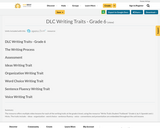
The resource offers multiple video lessons for each of the writing traits at the grade 6 level, using the resource "Write Traits Student Traitbook" Grade 6, by V. Spandel and J. Hicks.
The traits include:
- ideas
- organization
- word choice
- sentence fluency
- voice
- conventions and presentation are embedded throughout the unit lessons
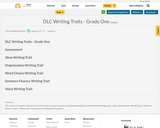
This resource includes 5 videos for each of 5 weeks to assist students in developing writing trait skills in the following areas: -Ideas -Organization -Word Choice -Sentence Fluency -Voice **Please note: Conventions is embedded throughout.

Students reinforce their knowledge that DNA is the genetic material for all living things by modeling it using toothpicks and gumdrops that represent the four biochemicals (adenine, thiamine, guanine, and cytosine) that pair with each other in a specific pattern, making a double helix. They investigate specific DNA sequences that code for certain physical characteristics such as eye and hair color. Student teams trade DNA "strands" and de-code the genetic sequences to determine the physical characteristics (phenotype) displayed by the strands (genotype) from other groups. Students extend their knowledge to learn about DNA fingerprinting and recognizing DNA alterations that may result in genetic disorders.

Students perform DNA forensics using food coloring to enhance their understanding of DNA fingerprinting, restriction enzymes, genotyping and DNA gel electrophoresis. They place small drops of different food coloring ("water-based paint") on strips of filter paper and then place one paper strip end in water. As water travels along the paper strips, students observe the pigments that compose the paint decompose into their color components. This is an example of the chromatography concept applied to DNA forensics, with the pigments in the paint that define the color being analogous to DNA fragments of different lengths.

Hank imagines himself breaking into the Hot Pockets factory to steal their secret recipes and instruction manuals in order to help us understand how the processes known as DNA transcription and translation allow our cells to build proteins.

Hank introduces us to that wondrous molecule deoxyribonucleic acid - also known as DNA - and explains how it replicates itself in our cells.

Your body is made of cells -- but how does a single cell know to become part of your nose, instead of your toes? The answer is in your body's instruction book: DNA. Joe Hanson compares DNA to detailed manual for building a person out of cells -- with 46 chapters (chromosomes) and hundreds of thousands of pages covering every part of you.

A super fun interactive game highlighting the DNA structure

Use the controls to explore this fragment of a much longer DNA strand. Can you find the four different base pairs that DNA is constructed from?

As a class, students work through an example showing how DNA provides the "recipe" for making our body proteins. They see how the pattern of nucleotide bases (adenine, thymine, guanine, cytosine) forms the double helix ladder shape of DNA, and serves as the code for the steps required to make genes. They also learn some ways that engineers and scientists are applying their understanding of DNA in our world.

In Lesson 1, students learn about what DNA is and several different DNA typing techniques. In Lesson 2, students examine three different situations where DNA typing was used to carry out justice. Students also identify and evaluate different uses of DNA typing techniques and its possible benefits and misuses.

In this activity, students learn about the collection and processing of DNA evidence and use DNA profiling to solve a crime. The activity is designed for use on an interactive whiteboard with the whole class, and it can also be used individually or in small groups at a computer or with a data projector and laptop.
By the end of this activity, students should be able to:
describe where DNA is found in the body and how DNA may be ‘left behind’ at a crime scene
describe the basic structure of DNA
explain the process of DNA profiling

Explore how the code embedded in DNA is translated into a protein. Click Transcribe to zoom into the cell nucleus and see the chromosome unravel to expose the strands of DNA. The DNA separates and an mRNA strand is created by matching complementary nucleotides. Click Translate to watch the mRNA leave the nucleus for the cytoplasm and attach to a ribosome. tRNA molecules bring in amino acids and the amino acids are added in the correct order by matching complementary nucleotides. After translation, inspect the protein to see how the amino acid sequence folded.
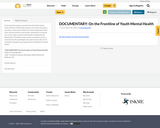
An all-new documentary, produced by the Saskatchewan Union of Nurses (SUN), takes viewers into school classrooms, onto after-school sports fields, into urban hospital psychiatric units, and into northern and remote communities to examine the current state of youth mental health in Saskatchewan. Meet grade 7/8 students, their teacher, psychiatric nurses, a school and youth psychologist and a peer mentor who are all working to change the way people view and talk about mental health.